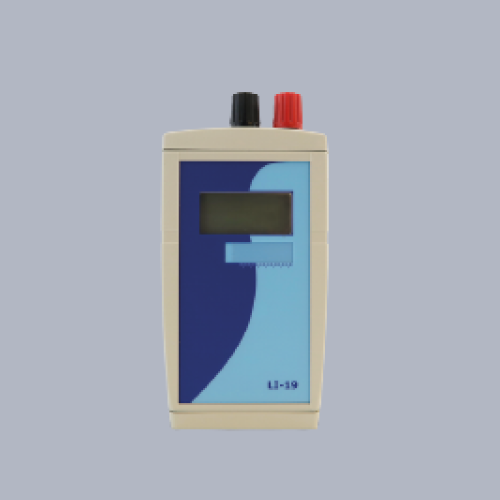Menu
Menu


The LI-19 Handheld Datalogger & Read-Out is compatible with analog EKO irradiance sensors, including the Class B MS-60 and Class C MS-40 pyranometers, and the MF and HF range of heat flux sensors.
Many irradiance and heat flux sensors are read with installed data acquisition systems in the field or laboratory; however, some applications and projects may instead require fast, simple, and accurate measurements using a mobile manual read-out — the LI-19.
Configurable via Windows software, the LI-19 can connect with a PC via USB and, with its internal memory, can be set to store data at regular intervals. The sensitivity value of checked sensors can also be set via the software.
The LI-19 is also supplied with a carrying case for additional sensors, USB cables and batteries.
| pa_number-of-channels | 1 |
|---|---|
| pa_input-range | 0 to 200 mV |
| Measurement accuracy | < 0.1 % |
| Impedance | Approx. 2 MΩ |
| pa_data-storage-capacity | 3,518 samples |
| Power supply | 3 VDC (2 x AA batteries) |
| pa_battery-life | 600 hours |
| Operating temperature range | -10 -to 40 °C |
| Dimensions | 70 x 146 x 25 mm |
| Weight | 0.175 kg |
| pa_resolution-v | Approx. 1 µV |
Contrary to popular belief, Lorem Ipsum is not simply random text. It has roots in a piece of classical Latin literature from 45 BC, making it over 2000 years old. Richard McClintock, a Latin professor at Hampden-Sydney College in Virginia, looked up one of the more obscure Latin words, consectetur, from a Lorem Ipsum passage, and going through the cites of the word in classical literature, discovered the undoubtable source. Lorem Ipsum comes from sections 1.10.32 and 1.10.33 of “de Finibus Bonorum et Malorum” (The Extremes of Good and Evil) by Cicero, written in 45 BC. This book is a treatise on the theory of ethics, very popular during the Renaissance. The first line of Lorem Ipsum, “Lorem ipsum dolor sit amet..”, comes from a line in section 1.10.32.
The standard chunk of Lorem Ipsum used since the 1500s is reproduced below for those interested. Sections 1.10.32 and 1.10.33 from “de Finibus Bonorum et Malorum” by Cicero are also reproduced in their exact original form, accompanied by English versions from the 1914 translation by H. Rackham.




